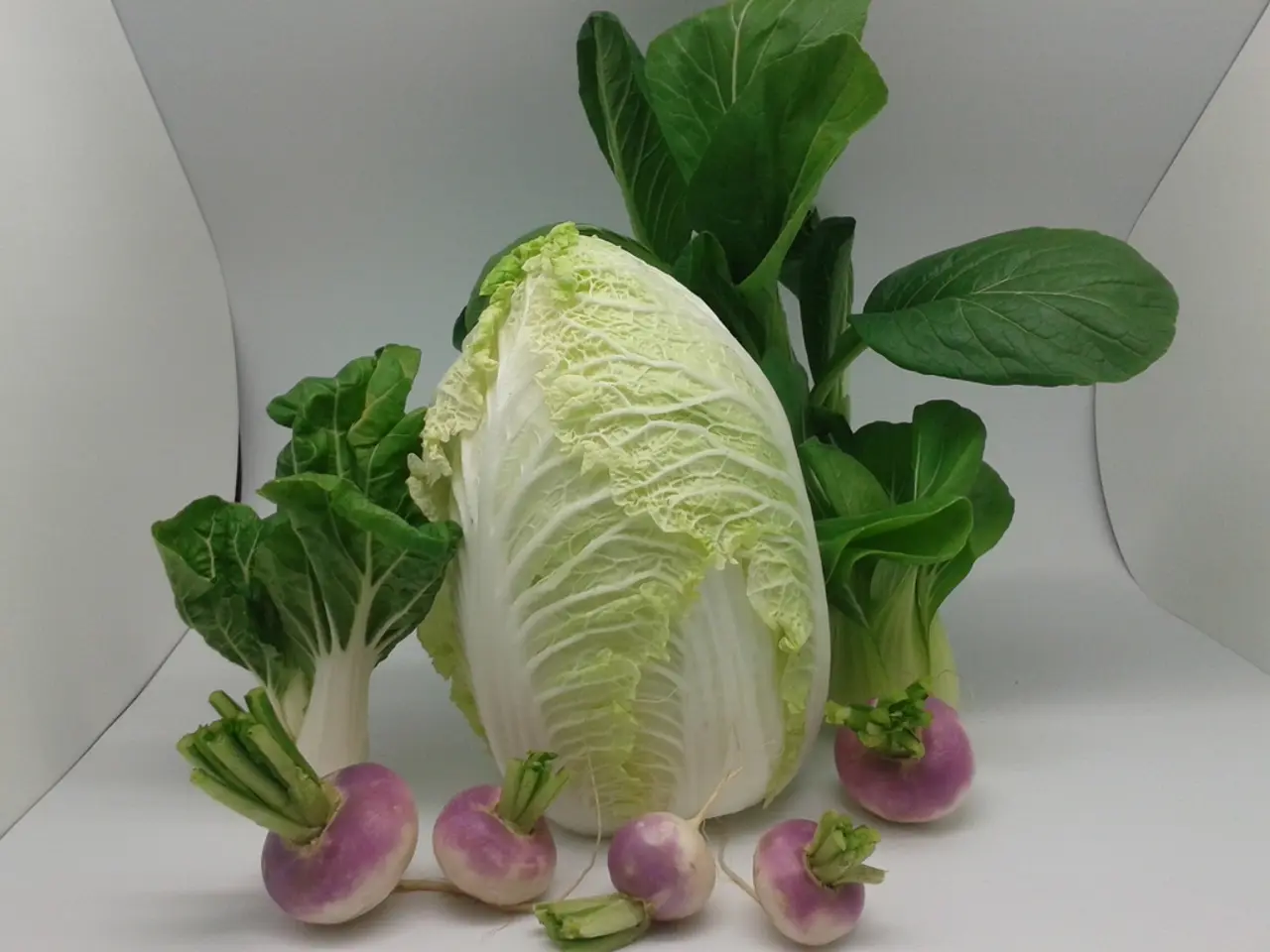Guidelines for Cultivating Decorative Kale and Cabbage
Ornamental kale, with its ruffled leaves of varying colours, is a popular choice for adding a touch of beauty to gardens and containers. These annual plants typically grow between 12 to 24 inches tall.
Ornamental kale and cabbage belong to the Acephala group of the species Brassica oleracea. They are often divided into two groups: those with smaller leaves with smooth, wavy edges and those with larger leaves and heavily fringed, lacey edges.
During the growing season, ornamental kale can be potted into larger pots or planted in the garden or tubs. As the night temperatures drop to 50 F or below, the leaves will begin to colour up, offering a striking display of hues.
However, ornamental kale and cabbage are subject to numerous problems from insects and diseases. Look out for 'chewers' like cabbage loopers and cabbage worms that leave unsightly holes in the leaves. Root maggots may infect seedbeds and can be controlled by watering with an insecticide. The club root fungus can be a severe problem in garden beds, and destroyed plants, removing infected soil, and waiting several years before planting cabbages or their relatives in that spot again are recommended.
Ornamental kale and cabbage are typically started in early spring by sowing seeds indoors in a warm, well-lit environment. After the danger of frost has passed, the seedlings can be transplanted outdoors. They prefer nutrient-rich, moist soil and benefit from regular watering and balanced fertilization, especially with potassium to enhance robustness during growth. However, it's important to stop fertilizing as the temperature starts to drop in late summer/early fall.
Ornamental kale plants are annual and are grown from seed sown in late spring. They are ideal for pots, tubs, and window boxes, either in a mixture of varieties or planted with fall-blooming plants such as chrysanthemums. Ornamental kale is not edible, and it's grown for decorative purposes only.
A newer F1 hybrid called 'peacock' has gained popularity. This variety boasts long, narrow, deeply cut leaves, giving the plant a snowflake-like appearance.
Ornamental kale seeds can be purchased from local garden centers, Walmart, Lowes, Home Depot, or Amazon. These plants can be used in various ways around the landscape, including as bedding plants, borders, and hedges.
When the ornamental kale plants begin to 'bolt' (flower) later in the winter or spring, they should be discarded. By following these guidelines, you can ensure a beautiful and healthy display of ornamental kale in your garden.
Read also:
- Proposal for a Worker Radiation Protection Directive Requested by Commission
- Sharply rising fatal accidents in Mainz 2025: A 144% surge in deaths - authorities plan to enhance safety for the elderly population
- Exploring the Digestive Benefits of Fermented Foods
- Senator Rasha Kelej welcomed Maldives First Lady at the seventh installment of the Merck Foundation's First Ladies Initiative Summit to discuss collaborative healthcare programs.




